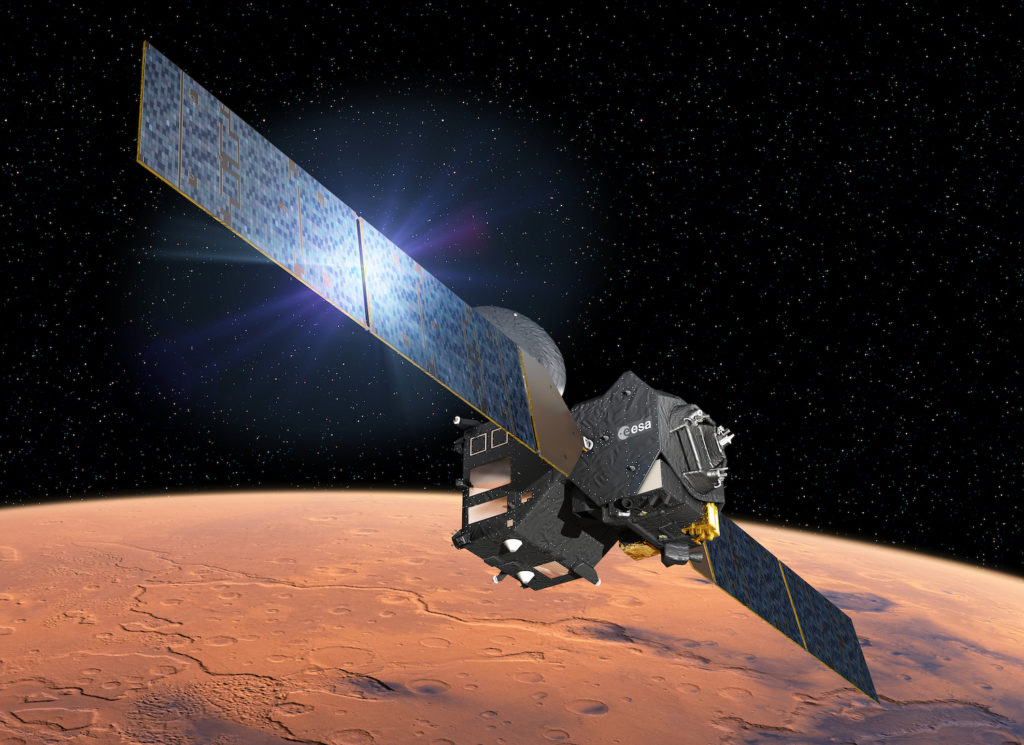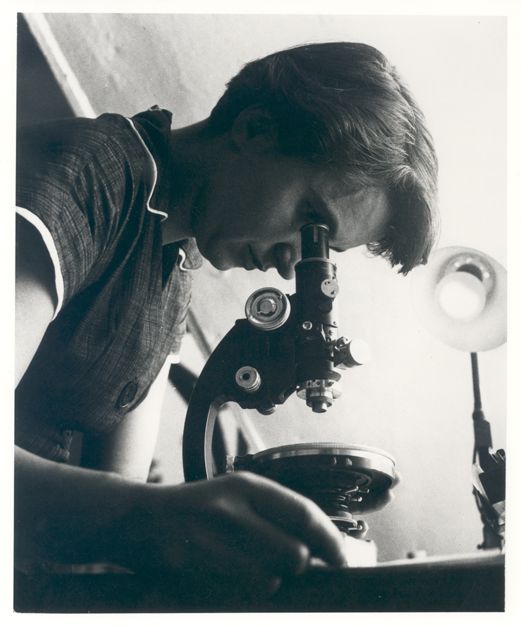The ExoMars program is managed by the European Space Agency (ESA), with the help of the Russian space agency Roscosmos. In this program, two missions aim to look for life traces on the red planet, Mars.
The Orbiter of ExoMars, Trace Gas Orbiter (TGO), and the lander Schiaparelli arrived near Mars in 2016. The orbiter is functional and he began to analyze the composition of the Martian atmosphere. TGO is particularly looking for methane, present in traces in Mars atmosphere. Furthermore, the TGO will serve as a relay for telecommunications with Exomars future rover. The landing of Schiaparelli, on the other hand, was a failure. If the thermal shields of the undercarriage worked well, the aircraft crashed to the surface due to saturation of the angular measuring sensors. The lost machine tested atmospheric entry technologies, but its planned ground functions were limited.

Launching of the ExoMars rover, named Rosalind Franklin, is scheduled for September 2022. Rosalind Franklin will land in the Oxa Planum Basin, located at the level of Mars equator. This zone was chosen because it presents geological structures suggesting a past presence of liquid water. In addition, Oxa Planum is relatively flat, which will facilitate the rover movements. With a mass of about 300 kg, the Rosalind Franklin rover contains a drill that is able to collect Mars soil samples up to two meters deep. These samples will then be analyzed by different instruments present in the rover. In order to determine their chemical composition, the Martian soil fragments will pass through the Mars Organic Molecule Analyzer (MOMA), a mass spectrometer coupled to a laser and a gas chromatrograph, the latter having been manufactured by two french laboratories the LISA (located at UPEC) & the LATMOS.
The analysis results that might reveal the possible presence of organic molecules on Mars will be transmitted through the TGO.
Rosalind Franklin

Rosalind Franklin is an English scientist of the 20th century. After working on the porosity of coal during her PhD in chemistry, she joined the biophysics department of King’s College in London. She studied there the conformations of a molecule that carries the genetic information of living beings, DeoxyriboNucleic Acid, better known as DNA. For this, she performed X-ray diffraction and took pictures that refuted the previous assumptions concerning the structure of DNA. These images were essential for James Watson and Francis Crick who were building a molecular model of DNA. In spite of her crucial importance in this discovery of DNA structure, but because of scientific conflicts, R. Franklin is not one of the authors of the publication describing the famous double helix. She continues her research on the structure of other biological molecules but the X-rays she was using quickly degraded her health. She died at age 38 from an ovarian cancer. Despite her major importance in biology, Franklin will never receive the Nobel Prize which is not awarded posthumously. It was awarded to Watson, Crick and a collaborator of Rosalind Franklin her work was not even thanked during the reception ceremony.
Today, Rosalind Franklin is part of the long list of women scientists whose success has been overshadowed by men. The ExoMars rover whose goal is to look for extraterrestrial traces of life is thus named after a pioneer essential to understanding the life we know on Earth.

